New Ways to Wander
In a 2019 post on the AML website, https://aml.ca/barrys-wander-2019-a-personal-reflection/, Carol Arcus described her experience participating in a “Barry’s Wander”. A Barry’s Wander, originally called a “Mall Crawl” or “Street Wander” but now named after its creator and AML founder Barry Duncan, is an experience where participants walk around a specifically selected area with the purpose of looking, listening and experiencing the environment through a media literacy lens. To borrow a phrase from the Ontario Kindergarten Curriculum document (2016), participants try to “name and notice” the sights and sounds and think critically about all the media texts that surround them. Fish aren’t aware of the water they swim in and similarly, we people are often oblivious to the media messages that are all around us.
Wanders can take place almost anywhere. When I took my Media Part 1 AQ in 2017 with AML, the class engaged in a wander within Yorkdale Mall. When I took my Media Part 2 AQ in 2023 with AML, it was an online course, but participants still shared their photos and insights from wanders in their local communities. Many of the examples came from commercial areas and focused on fascinating street signs, business fronts, park bench advertisements, and plaques.
If your school is in a primarily residential area, it is still possible to have some deep discussions thanks to a Barry’s Wander. Here are two tweaks that might add some interesting new considerations to the activity. To help understand what this might look like, I’ve included a sample from my own neighbourhood.
1. Mode of Transportation / Method of Capture
The word “wander” may suggest that walking is the primary way to conduct such a field trip. This isn’t necessarily so. What would the experience be like if it was taken in a car? Take a look at the pair of photos below. One was taken from the window of a car and the other was taken when the photographer was on foot, on the sidewalk.
Key Concept #8 (each medium has a unique aesthetic form) comes into play here, not just because they are both photographs, but because the first image was taken from a vehicle moving at about 40 km/hr. The blurry, shaky lines lend a sense of motion and action that the second photo does not, even though many of the decorations on this lawn were moving.
Speaking of moving, what if the method used to capture the visuals was different? What if I made a movie or filmed a video instead of taking still photos? Students can try different ways to capture the moment (including ones that don’t rely on visuals, like an app that mimics a tape recorder and focuses only on the sounds). Comparing and contrasting these methods leans into Key Concept #7 (form and content are closely related in each medium), as well as Key Concept #3 (audiences negotiate meaning) because each student will select different moments and objects during the wander to preserve.
If I were asked about the similarities and differences between “doing” a wander in a car vs under my own power, I’d point out that walking is slower, so I’m able to notice more details. However, being in a car is a different experience and can lend itself to different kinds of observations that might not happen on a sidewalk.
To infuse more equity into this train of thought, consider what this wander might be like if the individual undertaking it were in a wheelchair or used a cane or crutches. What would he/she/they be able to see? What would he/she/they be unable to hear or experience?
2. Different Times of Day
The photos I am using as an example in this blog post were taken by me at three different times of the day. The first set were taken at 7:00 pm. The second set were taken at 4:30 pm and the third set were taken at 8:00 am. All of these were taken in late November to early December 2023. How does the time of day impact the experience?
It was pointed out to me by Neil Andersen that Monet’s Haystack series of paintings has a similar goal. As described by Wikipedia,
The series is famous for the way in which Monet repeated the same subject to show the differing light and atmosphere at different times of day, across the seasons and in many types of weather.
Asking some media literacy themed questions would make for an interesting study. Potential questions could include:
- When is the best time of day to enjoy these holiday lawn decorations? Why?
- This display is a collaboration between three linked townhouses – what is the impact of them all decorating together?
- How are the other displays in the neighbourhood affected by this “mega-display”?
- What is the “focal point” on each of the lawns? Is there a focal point? Is there a unifying theme?
- What is the initial impression when first seeing the displays?
- What values or priorities to the “holiday season” are shown with the choice of display items?
- How much money must it cost in electricity and in purchasing ornaments to put together this display?
- Take a look at the sign zoomed in on in the early morning set of photos (saying “please do not touch / do not enter”) – why might the owners have needed to post the sign? How does it alter the festive nature of the display? How might visitors blur the lines between public and private property?
- What mood is generated by the morning photos? Is the display meant to be seen like this?
- In the final two photos, you can see a small Buddha statue near patio furniture behind the displays – what thoughts are triggered by the statue?
- What would it be like if there was snow on the ground?
- What would these places look like at different times of the year?
Set 1 – Evening
Set 2 – Late Afternoon
Set 3 – Early Morning
This annual display has actually garnered mainstream news media attention. Here is a 2020 BlogTO article about the three houses that participate (https://www.blogto.com/city/2020/11/three-homes-toronto-combined-create-epic-christmas-lights-display/) and a 2022 article about two of the houses (https://www.blogto.com/city/2022/12/decorate-brenyon-way-toronto/). The Toronto Star even included the famous location in a recent 2023 article about the best Christmas light displays to visit (https://www.thestar.com/news/gta/merry-and-bright-the-best-spots-around-toronto-to-see-christmas-lights/article_380efca3-7ccd-5dee-bbff-dc224df8339d.html)
The neighbours even have their own Google Site – https://sites.google.com/view/decorate-brenyon-way/home?pli=1 – as well as a Facebook page – https://www.facebook.com/decoratebrenyon/ – and an Instagram account. They do this for Halloween and for Christmas.
Hopefully this post may inspire you to take your own wander in your school or neighbourhood.



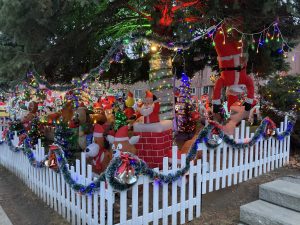

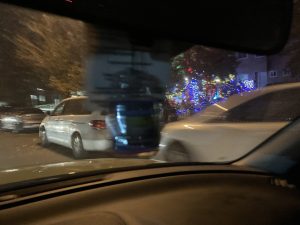

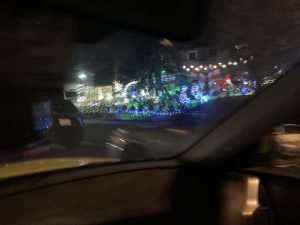

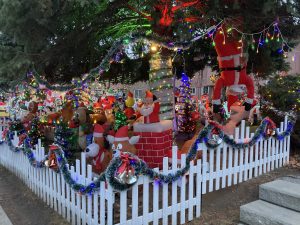

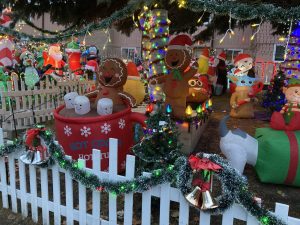
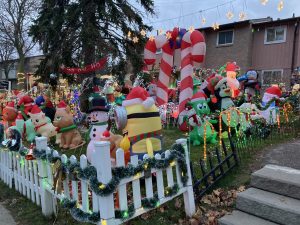

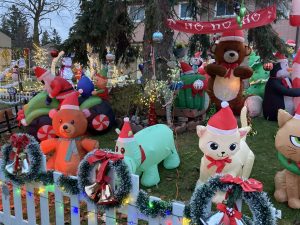



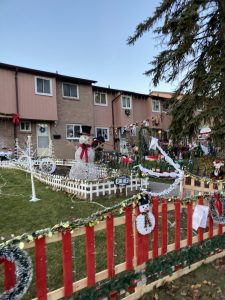

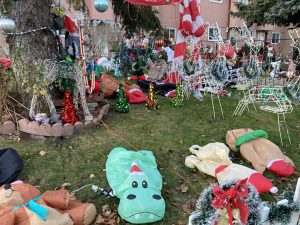


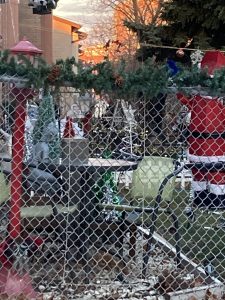



This is fun!
Why might someone build such an elaborate display?
How much do you think it cost?
Why might they post photos on social media?
Why might blogTO and the Star promote it?
Where/how might they store all the Halloween and Christmas gear?
We had a neighbour in the entertainment industry that had similar displays during Halloween and Christmas. The neighbours seemed to to be keeping up with the Jone’s. Interesting to think about how competition adds to what people see as they “Wander”.